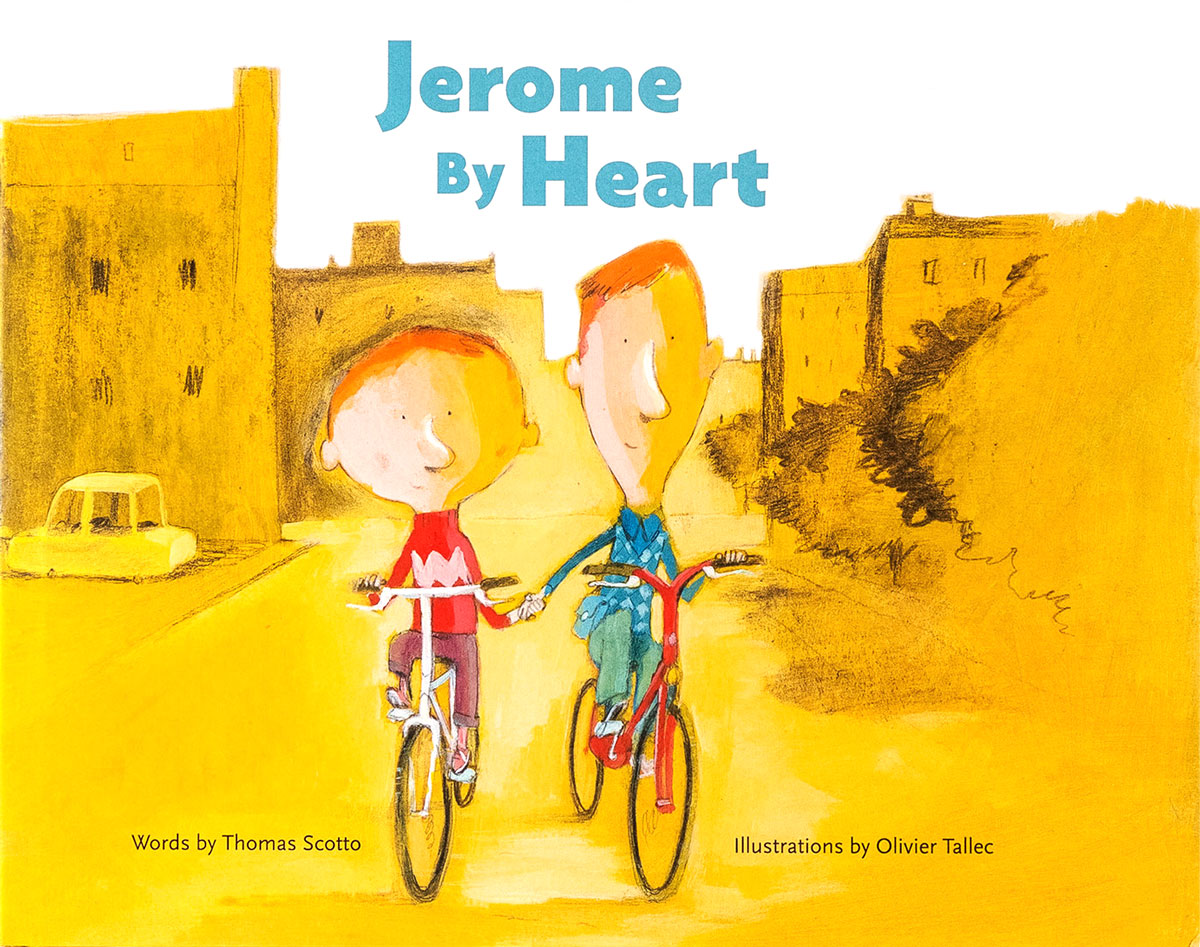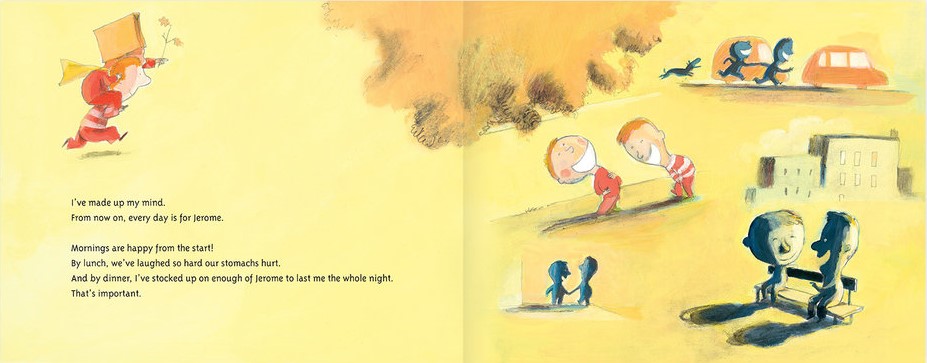
Inclusive Children's Book Teaching Guide
Jerome By Heart
What is this book about?
Raphael, the main character in this book, shares his deep affection for his friend, Jerome. They share inside jokes, snacks and imaginative adventures.
Raphael realizes that he feels happy, liked, understood, and special whenever they are together, and his love for Jerome enables him to forget about anything that makes him feel down.
Who is depicted in this book?
- Children who may be LGBTQ+
- Children who transcend gender stereotypes
What early childhood themes and concepts does this book explore?
- Social play behaviors (holding hands, walking, running, playing kickball, riding bikes)
- Expressing shared enjoyment and happiness through laughter
- Friendship, the characteristics of a good friend, and the ways that friends show love and care (greeting, sharing, defending one another)
- Exploring places in the neighborhood and community such as streets, sidewalks, fields, parks, and museums
- The different ways that adults and children think and see the world
How does this book support anti-bias education?
Jerome By Heart disrupts stereotypes surrounding male-male friendships and biases against expressions of love within those friendships.
The opening quote sets the stage for the book’s exploration of the affection that young children often feel for one another, as well as the book’s premise that this unselfconscious affection is something to be celebrated and protected:
"And the passers-by pointed their fingers at them. But the children who love each other aren’t there for anyone else." — Jacques Prévert
Depending on how the book is shared or used—and the developmental level of the children—the images and text may be used to support the following core goal from the book, Anti-Bias Education for Young Children and Ourselves:
Diversity—Teachers will promote each child’s comfortable, empathetic interactions with people from diverse backgrounds so that children will express comfort and joy with human diversity, use accurate language for human differences, and form deep, caring connections across all dimensions of human diversity.
How can this book be used to meet early childhood learning standards?
For all ages
Use Jerome By Heart to meet early childhood literacy standards >
For children from birth to age three
Teaching suggestion: Point out forms of play, other actions and various familiar settings that the youngest children can react to, point at, or name.
What Illinois Early Learning Guideline does this meet for children from birth to age three?
Developmental DomainSocial-Emotional Development
Standard: Relationship with PeersChildren demonstrate the desire and develop the ability to engage and interact with other children.
Indicators for children:
- Begins to engage in parallel play, in closer proximity to other children but no interaction is attempted (7–18 months)
- Begins to engage in simple reciprocal interactions such as rolling a ball back and forth (16-–24 months)
- Demonstrates a preference for select peers (21–36 months)
For preschoolers (ages three to five)
Teaching suggestion: As Jerome and Raphael engage in a series of play adventures, they experience play with a friend, sadness at separation, and the joy of reunion. Encourage your students to recall the sequence of events in the book and describe this sequence in their own words.
What Illinois Early Learning and Development Standards does this meet for preschoolers?
Language Arts Standard2BRecognize key ideas and details in stories.
Benchmark 2.B.ECb:
With teacher assistance, retell familiar stories with three or more key events.
Teaching suggestion: Encourage the children to identify the feelings expressed by Jerome.
What Illinois Early Learning and Development Standards does this meet for preschoolers?
Social/Emotional Development Standard30AIdentify and manage one’s emotions and behavior.
Benchmark 30.A.ECa:
Recognize and label basic emotions.
Teaching suggestion: As you read Jerome by Heart aloud, encourage the children to listen for the traits of a good friend and share their thoughts about the people they love.
What Illinois Early Learning and Development Standards does this meet for preschoolers?
Social/Emotional Development Standard31ADevelop positive relationships with peers and adults.
Benchmark 31.A.ECa:
Show empathy, sympathy, and caring for others.
Benchmark 31.A.ECc:
Interact easily with familiar adults.
Teaching suggestion: Compare and contrast Jerome by Heart with another story about friendship.
What Illinois Early Learning and Development Standards does this meet for preschoolers?
Language Arts Standard2DEstablish personal connections with books.
Benchmark 2.D.ECb:
With teacher assistance, compare and contrast two stories relating to the same topic.
Teaching suggestion: Use a discussion of Jerome by Heart to affirm loving friendships and boys who openly share their emotions.
What Illinois Early Learning and Development Standards does this meet for preschoolers?
Social/Emotional Development Standard31ADevelop positive relationships with peers and adults.
Benchmark 31.A.ECa:
Show empathy, sympathy, and caring for others.
Benchmark 31.A.ECc:
Interact easily with familiar adults.
What other resources are available?
Read an online analysis of Jerome By Heart at raisethemrightous.com >

